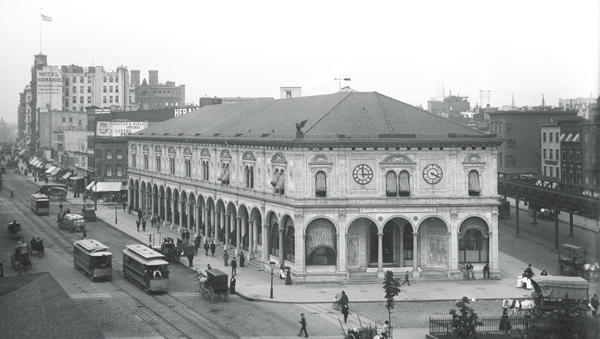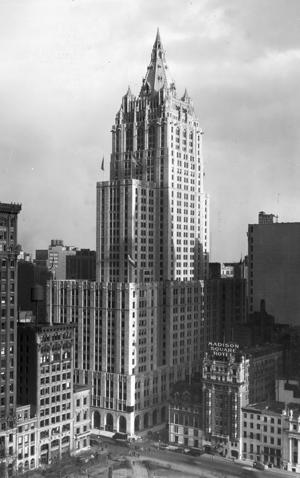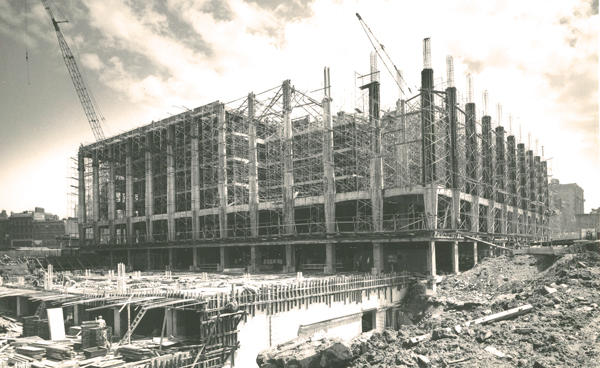Trending
This month in real estate history
This month in real estate history

1893: Herald Square’s namesake building revealed
Drawings of the new Herald Building by architect Stanford White were revealed 125 years ago this month, according to the New York Times. The building would be the new headquarters of the New York Herald newspaper, which had been located in Lower Manhattan since its founding in 1835. Built on an unusually shaped site, the three-story structure featured deep arcades that allowed passersby to view the paper’s printing presses at work — a gimmick the Times called “a costly advertisement.” While real estate operators reportedly viewed the low-rise building “with horror,” White’s monumental design — with its historical references and the unusual addition of 26 bronze hoot owls and an intricate clock to its exterior — made it more valuable than erecting a skyscraper, to the Times at least. Completed by 1895, the distinct structure was not to last: A nearly two-decade-long demolition began in 1921. Afterward, in 1940, a 40-foot granite monument dedicated to the Herald’s founder, James Gordon Bennett and his son, was erected in the neighboring park, Herald Square, and decorated with the building’s original clock and two of the owls.
1924: New York Life tests the city’s limits

New York Life Insurance Building
Plans for the New York Life Insurance Building were filed 94 years ago this month, according to the New York Times. The proposed 28-story, 1 million-square-foot building to be designed by celebrated architect Cass Gilbert, would fill the entire area of the original Madison Square Garden site on Madison Avenue between 26th and 27th streets. The structure, which would house the company’s new headquarters, was estimated to cost $15 million at the time. Though the company owned the site — it had acquired the property at a foreclosure auction in 1916 for the bargain price of $2 million — there was uncertainty whether the Bureau of Buildings would allow the insurer’s seemingly grandiose plans to go through. The bureau ultimately approved and, two years later, Gilbert’s design had increased to 40 stories. Construction was completed in 1928, and the building, now a designated landmark, is still owned by the insurance company.

Lincoln Center
1957: Robert Moses confronts critics
A memo, penned by Robert Moses and published in part by the New York Times 61 years ago this month, outlined the public official’s real estate plans for the coming year. It was prefaced with a note from then-Mayor Robert Wagner addressed to Albert Cole, administrator of the federal housing and home finance agency. The mayor noted his “disappointment” with delays — a reference to an ongoing political spat between Cole and the infamous Moses, who was then the chairman of the Slum Clearance Committee. Moses wanted to use the 1949 Housing Act’s Title I funds to replace slums with schools and middle-class neighborhoods, which put him and Cole at odds, particularly over the planned demolition of one location, Lincoln Square. In Moses’ memo, he assured the mayor that the city would soon receive $30 million for the razing and transformation of Lincoln Square into a performing arts center. Cole, however, would block the funds, much to the approval of Lincoln Square’s residents. In the end though, Moses triumphed: The project broke ground in 1959, and 18 city blocks were leveled to make way for the Metropolitan Opera House, Philharmonic Hall and Fordham University.




